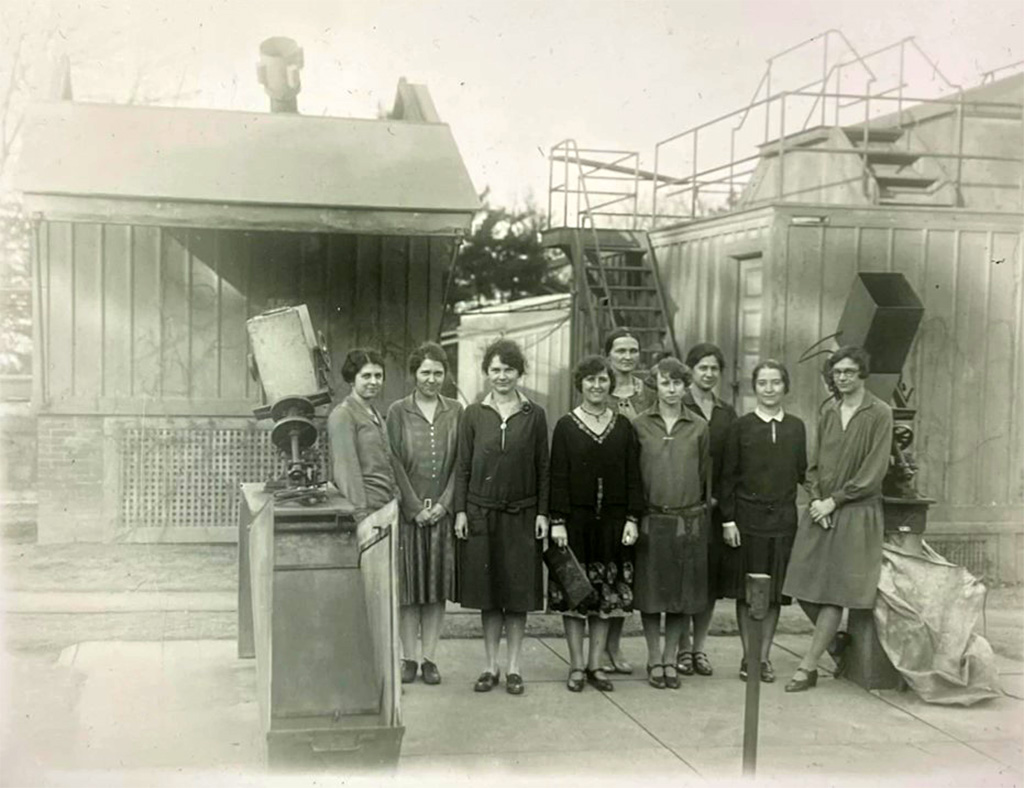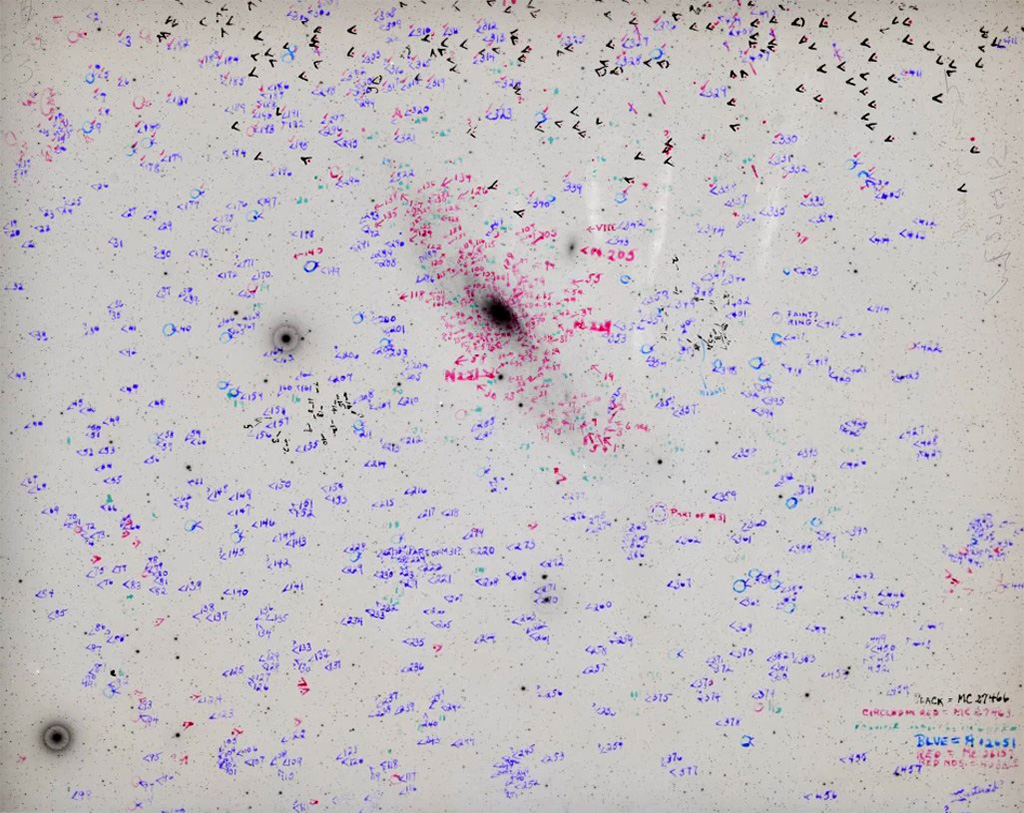
Pandemic provided impetus to preserve a legacy: The Women Computers of Harvard Observatory
Above image: Archival photos found while inventorying at the Harvard Plate Stacks are being rehoused. (Photo: Astronomical Photographic Glass Plate Collection, Harvard College Observatory)
By Lisa Bravata
The Harvard College Observatory began building its collection of astronomical photographic plates strategically shortly after the invention of dry plate photography in the 19th century. Harvard astronomers’ prolific output of photographs needed to be carefully analyzed, a tedious process of taking measurements and mathematical calculations. Women could be hired at a cheaper rate than men to do this work, and today we know that more than 200 Women Astronomical Computers at the observatory helped advance our modern understanding of the universe.
By the late 20th century, the dominance of digital technology altered the way astronomers worked, and there was less reliance on the photographic plate collection. During this time, the digitization project Digital Access to a Sky Century was conceived to make HCO’s glass plate negatives accessible for modern scientific research. For decades, this project left little time or resources for preserving the legacy of the Women Astronomical Computers. When the pandemic forced staff to remote work, curator of astronomical photographs Lindsay Smith Zrull pivoted staff excitedly to researching and gathering as much information as possible about these women. The result of their research is a list of 216 people that Zrull published in 2021.

Building on the success of this research, the Plate Stacks were switched in 2022 from a departmental collection into an archival collection within the Harvard Library system. Curatorial assistants are working to inventory all the objects and materials in the collection for the first time. Previously, only the glass plates and their original jackets were well documented, but it was quickly realized that the Plate Stacks and everything inside the space held context and historic value. Our challenge is how to archive a collection you are working inside of. There are “mystery” cabinets to have unlocked and inventoried, objects once thought of as office supplies are being appreciated in a whole new light (personalized stationery from a past curator was, in fact, not scrap paper), and photos pinned to the bulletin board decades ago are being moved to more appropriate archival housing.

The transition to Harvard Libraries affords the Plate Stacks a unique opportunity to evaluate their user communities and make the collection more accessible to wider demographics. In the past, writers, artists, historians and students all made their way to the collection by their own committed research. Conservators are equally interested in the collection, which has detailed records of the photographic process, including date and length of exposure, along with documentation for how they have been stored over time. These are the underserved users we have in mind while developing finding aids from the inventory, arrangement and description process we’re undertaking.
While there were plenty of setbacks during the pandemic, the Plate Stacks were fortunate to be able to take that time to consider the potential of the collection and are now in a better position to grow their users within and beyond the field of astrophysics.
Lisa Bravata is curatorial assistant at the Astronomical Photographic Plate Collection, Harvard & Smithsonian Center for Astrophysics.
This article was originally published in our “Did You Know?” column in Cambridge Day.






